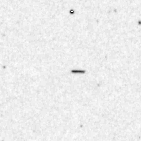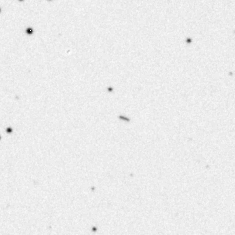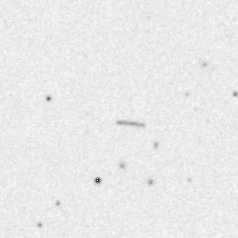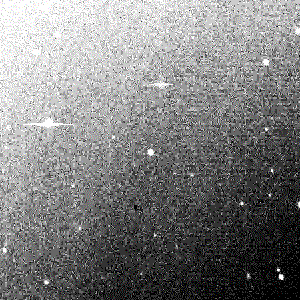



At this point, I wanted to contribute to the field of asteroid orbit determinations, but I felt that duplicating work of the MPC was not useful. Then I realized that asteroids observed on two nights could have circular orbits determined, which was something the MPC was not doing. I compared circular orbits from a large number of asteroids and was able to determine that some of them were very similar in size and orientation in space. With my software, I selected two asteroids with astrometry from two nights from two different years and tried to compute a general orbit (since there were four nights of astrometry available). The computations were very difficult since the distribution of the observations were so poor, but in a number of cases, I was able to demonstrate that the asteroids observed in different years with similar circular orbits were in fact the same asteroid.
From 1985 until 1994, I updated my database with new circular orbits from recently published astrometry, and attempted new linkages. In many cases, successful linkages were confirmed by the MPC with the addition of new data for the newer objects, where general orbits could be computed. However, I brought to the attention of the MPC many new identifications from my circular-orbit analysis.
A summary of my work can be found here.
On April 10, 1990, the MPC recognized my contributions to asteroid identifications by naming the newly-numbered minor planet (4091) 1986 TL2 after me.
A display of the orbit of (4091) Lowe is available from NASA here.
The lightcurve for (4091) Lowe is available, courtesy of Brian D. Warner, here.
(4091) Lowe = 1986 TL2
Discovered 1986 Oct. 7 by E. Bowell at the Anderson Mesa Station of
the Lowell Observatory.
Named in honor of Andrew Lowe, a Canadian professional geophysicist and
amateur astronomer in Calgary who has particular interests in computational
astronomy involving minor planets and occultations. In recent years, he has
opened up a new area of identification research by establishing several
cases of linkages of orbits where the observations of the minor planets
involved were made on only two nights at individual oppositions.
(4091) Lowe Epoch 2020 May 31.0 TT = JDT 2459000.5 Pan M 101.73643 (2000.0) P Q n 0.17375748 Peri. 195.11242 -0.42880942 +0.88883525 T = 2458414.99176 JDT a 3.1805853 Node 49.78099 -0.80536326 -0.29510563 q = 2.8054490 e 0.1179457 Incl. 12.21334 -0.40928291 -0.35054896 P 5.67 H 11.64 G 0.15 U 0 From 2373 observations at 25 oppositions, 1955-2020, mean residual 0".48. Discovery date : 1986 10 07 Discovery site : Anderson Mesa Discoverer(s) : Bowell, E.
 |
50-minute exposure taken on 1955-04-14 at Palomar Observatory (DSS Palomar Sky Survey I) |
 |
90-minute exposure taken on 1986-09-01 at Palomar Observatory (DSS Palomar Sky Survey II) |
 |
60-minute exposure taken on 1986-11-02 at Palomar Observatory (DSS Palomar Sky Survey II) |
 |
Animation (15-minute interval) taken on 2001-04-26 at Haleakala (NEAT Program) |
DSS images are from DSS plate archive scans, which are © copyright California Institute of Technology.
NEAT images are from SkyMorph, which is a NASA Applied Information Systems Research (AISR) funded project.